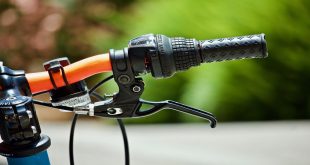A hybrid bike is generally faster than a mountain bike due to its design and components. Hybrid bikes are known for their speed and versatility, making them a popular choice for commuters and recreational cyclists.
Compared to mountain bikes, hybrids are lighter, have thinner tires with less rolling resistance, and are more aerodynamic, allowing for greater speed and efficiency on pavement. Mountain bikes, on the other hand, are built for off-road adventures and rough terrains, so they tend to have heavier frames, wider tires with more traction, and lower gear ratios for climbing steep trails.
While hybrids have the advantage of speed on smooth surfaces, mountain bikes excel in maneuverability and stability on uneven or rugged terrain. Overall, the choice between a hybrid and a mountain bike depends on the specific needs and preferences of the rider.
Understanding The Fundamental Differences
Understanding the Fundamental Differences When it comes to choosing a bike, understanding the fundamental differences between a hybrid bike and a mountain bike is crucial. Both types of bikes have their own unique characteristics and features that cater to different cycling needs. In this article, we will delve into the key components and features of hybrid bikes and mountain bikes, and how these differences impact speed and performance.
Key Components And Features Of Hybrid Bikes
Hybrid bikes are designed to be versatile and well-rounded, making them a popular choice for urban commuting and recreational cycling. These bikes offer a great blend of features from both road bikes and mountain bikes. Here are the main components and features that distinguish hybrid bikes:
- Frame: Hybrid bikes typically have a lightweight frame made of aluminum or carbon fiber. This provides better maneuverability and agility compared to mountain bikes.
- Tires: The tires of hybrid bikes are usually slick and narrower than those of mountain bikes, allowing for smoother and faster rides on paved roads.
- Handlebars: Hybrid bikes often feature flat or slightly riser handlebars, promoting a more upright and comfortable riding position. This helps to reduce wind resistance and improve overall speed.
- Gearing: Hybrid bikes usually come with a wide range of gears, allowing riders to tackle various terrains with ease. The gearing system is typically designed for both high-speed cruising and climbing hills.
- Suspension: While some hybrid bikes may have front suspension forks to absorb bumps and shocks, most models prioritize lightweight and do not incorporate full suspension systems like mountain bikes.
Key Components And Features Of Mountain Bikes
Mountain bikes, on the other hand, are purpose-built for off-road adventures and demanding terrains. These bikes are specifically engineered to handle rough trails and navigate challenging environments. Here are the main components and features that define mountain bikes:
- Frame: Mountain bikes have a sturdy and durable frame, usually made of steel, aluminum, or carbon fiber. This ensures the bike can withstand the rigors of off-road riding.
- Tires: Mountain bikes are equipped with wide and knobby tires that provide excellent traction and grip on uneven and loose surfaces. The increased tire volume also helps absorb impact and enhance stability.
- Handlebars: Mountain bikes typically feature wide and flat handlebars, offering riders more control and leverage when tackling steep descents and technical trails.
- Gearing: Mountain bikes often come with a wide range of gears, including lower gears for climbing steep inclines and higher gears for downhill speed. This allows riders to efficiently navigate different gradients.
- Suspension: Unlike hybrid bikes, mountain bikes are equipped with robust suspension systems. These systems can be found in the front fork (front suspension) and sometimes in the rear frame (full suspension). The suspension absorbs impacts and helps maintain traction on uneven surfaces.
How These Differences Impact Speed And Performance
The differences in components and features between hybrid bikes and mountain bikes directly influence their speed and performance characteristics. Here’s how these differences impact each type of bike:
- Hybrid bikes excel in speed and efficiency on paved surfaces. With their lighter frames, narrower tires, and more streamlined riding position, hybrid bikes offer reduced wind resistance and better acceleration. Additionally, their versatile gearing allows riders to find the perfect cadence for both flats and inclines.
- Mountain bikes prioritize stability and traction over outright speed. The wider and knobbier tires, combined with the suspension systems, provide superior grip on rough terrains. Mountain bikes also offer a wider gear range, enabling riders to conquer challenging climbs and maintain control during descents, albeit at a slower pace compared to hybrid bikes on smooth surfaces.
In conclusion, the key components and features of hybrid bikes and mountain bikes significantly impact their speed and performance. Hybrid bikes are designed for urban commuting and recreational cycling, offering speed and efficiency on paved roads. On the other hand, mountain bikes are specialized for off-road adventures, prioritizing stability and traction over pure speed. Understanding these differences will help you choose the right bike for your specific cycling needs.
Analyzing Speed Factors
When it comes to comparing the speed of different types of bicycles, there are several factors that come into play. Analyzing these speed factors can help us understand and evaluate the performance differences between hybrid bikes and mountain bikes. In this article, we will delve into the impact of aerodynamics, weight, tire width, and gearing systems on the overall speed of these two types of bicycles.
Aerodynamics And Its Impact On Speed
Aerodynamics play a crucial role in determining how fast a bicycle can go. The sleeker and more streamlined a bike is, the less resistance it will encounter as it cuts through the air. In the case of hybrid bikes and mountain bikes, hybrid bikes typically have a frame design that prioritizes efficient aerodynamics, allowing them to glide through the wind with ease. Mountain bikes, on the other hand, often have a more upright riding position and features like suspension forks that increase drag. Therefore, in terms of pure aerodynamic advantage, hybrid bikes tend to outperform mountain bikes in speed on flat terrain and when facing headwinds.
Weight And Its Effect On Acceleration And Climbing
Weight plays a significant role in the acceleration and climbing capabilities of a bike. Hybrid bikes are generally lighter than mountain bikes, as they are designed for commuting and recreational riding rather than rugged off-road adventures. A lighter bike requires less energy to accelerate and offers better maneuverability. This makes hybrid bikes faster in situations that require frequent changes in speed, such as stop-and-go city traffic. However, when it comes to steep inclines and challenging terrains, mountain bikes, with their sturdy frames and wider tires, provide better stability and traction, allowing riders to conquer uphill climbs with greater ease.
Tire Width And Its Influence On Traction And Speed
Tire width is another crucial factor that affects the speed and performance of a bicycle. Hybrid bikes generally have narrower tires than mountain bikes. The narrower tires on hybrid bikes reduce rolling resistance, resulting in increased speed on paved roads and smoother surfaces. They are designed to maximize efficiency by minimizing friction. In contrast, mountain bikes feature wider tires with aggressive treads, providing superior traction and control on rough terrain and gravel paths. The increased surface area of the wider tires on mountain bikes allows for improved stability and grip when riding off-road. Therefore, while hybrid bikes excel in speed on smooth surfaces, mountain bikes shine in challenging off-road conditions.
Gearing System And Its Contribution To Speed
The gearing system of a bike also plays a significant role when it comes to speed. Hybrid bikes typically have a wider range of gears, including higher gears for faster speeds on flat terrain. The wider gear range allows riders to find the perfect cadence for maintaining higher speeds on long rides. Mountain bikes, on the other hand, prioritize lower gears to handle steep inclines and technical terrains encountered during off-road riding. While these lower gears may limit the top speed on the flats, they are essential for efficiently climbing hills and navigating rough trails. Therefore, the gearing system of a bike is a crucial factor to consider when comparing the speed capabilities of hybrid bikes and mountain bikes.
Conducting Speed Tests
In order to determine how much faster a hybrid bike is compared to a mountain bike, conducting speed tests under controlled conditions is essential. Setting up controlled speed test conditions allows for accurate and reliable measurements that can provide valuable insights into the performance differences between these two bike types.
Setting Up Controlled Speed Test Conditions
To ensure consistent results, it is crucial to establish controlled speed test conditions. First and foremost, you need to choose a suitable testing area, such as a flat and open road or a designated track. This eliminates external factors that could impact the outcome of the tests, such as varied terrains and obstacles.
Next, it’s important to ensure that both the hybrid and mountain bikes being tested are in optimal condition. Check tire pressure, brakes, and drivetrain to guarantee they are functioning properly. This helps to eliminate any mechanical issues that could affect the results.
Measuring Speed And Comparing Results Between Hybrid And Mountain Bikes
Once the speed test conditions are set up, it’s time to measure the speed and compare the results between the hybrid and mountain bikes. You can use various methods to measure speed, such as cycling GPS devices, bike computer sensors, or smartphone applications that track speed and distance.
During the speed test, ensure that the rider’s effort level is consistent for both bike types. This means maintaining a steady pedaling cadence and similar power output. By ensuring equal effort, the focus shifts to the bike’s inherent capabilities, allowing for a fair comparison.
Analyzing The Data And Calculating The Speed Difference
With the speed test data collected, it’s time to analyze the results and calculate the speed difference between the hybrid and mountain bikes. Start by calculating the average speed achieved by each bike type throughout the tests. Consider factors such as acceleration, top speed, and overall efficiency.
Once you have the average speed figures for both bike types, you can calculate the speed difference by subtracting the average mountain bike speed from the average hybrid bike speed. This calculation provides a quantitative measure of how much faster the hybrid bike is compared to the mountain bike in the given conditions.
Conducting speed tests and carefully analyzing the gathered data is crucial to understanding the speed capabilities and differences between hybrid and mountain bikes. These tests provide valuable insights for cyclists looking to make an informed choice based on their desired riding style and preferences.
Real-world Performance Comparison
When it comes to choosing the right bike for your needs, understanding the real-world performance comparison between a hybrid bike and a mountain bike is crucial. While both offer unique advantages, it’s important to consider specific factors such as terrains, road conditions, urban areas, and off-road trails. Let’s explore these aspects and assess the speed and performance of both bikes in each scenario.
Exploring Different Terrains And Road Conditions
Hybrid bikes are designed to provide versatility and efficiency across various terrains and road conditions. With their lightweight frames and smooth-rolling tires, they excel on paved roads, gravel paths, and even compact dirt trails. The combination of a rigid frame and the right tire pressure allows for excellent traction and control, promoting a comfortable and efficient riding experience.
On the other hand, mountain bikes are specifically built for rough terrains and challenging off-road trails. With their durable and sturdy frames, suspension systems, and knobby tires, mountain bikes offer exceptional control and stability on uneven surfaces. The suspension absorbs shocks, reducing the impact on the rider and enhancing overall comfort. When it comes to navigating through rocky, muddy, or steep terrains, mountain bikes are the go-to option.
Assessment Of Speed And Performance In Urban Areas
In urban areas, where roads are generally paved and well-maintained, hybrid bikes have the edge in terms of speed and performance. Their lighter weight and efficient design allow riders to accelerate quickly and maintain a brisk pace without exerting excessive effort. The narrow tires minimize rolling resistance, ensuring maximum efficiency for city commuting and maneuvering through traffic. Hybrid bikes are ideal for daily commutes, fitness rides, and errands around town.
While mountain bikes can still be used in urban areas, their bulkier design and wider tires make them slightly less efficient for city riding. However, the advantages of mountain bikes, such as their stability and durability, may outweigh the slight decrease in speed. Mountain bikes are often chosen by riders who prioritize off-road capabilities but also want a bike that can handle occasional urban rides.
Assessment Of Speed And Performance In Off-road Trails
When it comes to tackling off-road trails, mountain bikes outshine hybrid bikes with their exceptional speed and performance. The robust construction, suspension systems, and wider tires specifically designed for handling rough surfaces make mountain bikes the clear winners in this category. Whether it’s climbing steep hills or descending through challenging terrains, mountain bikes provide superior control, stability, and confidence.
Hybrid bikes, while versatile in different terrains, may struggle to match the speed and precision of a mountain bike when it comes to off-road trails. The narrower tires, lack of suspension, and lighter build of hybrid bikes limit their ability to absorb shocks and maintain stability on rugged terrains. However, for riders who enjoy occasional off-road adventures without the extreme challenges, hybrid bikes can still provide an enjoyable riding experience.
Factors To Consider When Determining Speed Needs
Identifying Personal Preferences And Riding Styles
One of the key factors to consider when determining the speed needs of a hybrid or mountain bike is your personal preferences and riding style. Different riders have different preferences when it comes to speed. Some riders prioritize speed and efficiency, aiming to cover longer distances in a shorter period, while others might focus more on comfort and leisurely rides.
If you enjoy cruising on flat terrains at a brisk pace, a hybrid bike might be the ideal choice for you. Hybrid bikes are designed with a lightweight frame, narrower tires, and a geometry that allows for a more aerodynamic riding position. This characteristic makes hybrids faster on smooth roads while maintaining stability and comfort.
On the other hand, if you are someone who loves off-road adventures and tackling challenging terrains, a mountain bike might be better suited for you. Mountain bikes have wider, knobbier tires that provide excellent traction on rough trails. While they may not be as fast as hybrid bikes on smoother roads, they offer superior control and stability, enabling riders to maneuver through obstacles and steep inclines.
Ultimately, identifying your personal preferences and riding style is crucial in determining the speed needs of your bike. Consider how and where you primarily ride to ensure you choose a bike that aligns with your intended usage.
Evaluating The Intended Use Of The Bike
Another important factor to consider when determining the speed needs of a hybrid or mountain bike is the intended use of the bike. Think about the type of terrain you will be riding on and the purpose for which you will be using the bike most frequently.
| Type of Use | Recommended Bike |
|---|---|
| Casual city commuting or recreational rides on paved surfaces | Hybrid Bike |
| Off-road trails, mountain biking, and rough terrains | Mountain Bike |
Determining the intended use of the bike provides valuable insight into the specific features and specifications you should prioritize. For example, if you primarily ride on flat paved surfaces, a hybrid bike’s lightweight and streamlined design will help you achieve higher speeds more efficiently. However, if you plan on venturing off-road frequently, a mountain bike’s durability and off-road capabilities will be essential, even if it sacrifices some speed on paved roads.
Considering Other Factors Impacting Speed, Such As Fitness Level And Experience
Aside from personal preferences and intended use, various other factors can impact the speed of a hybrid or mountain bike. Two significant factors to consider are your fitness level and experience as a cyclist.
- Your fitness level: A cyclist with a higher fitness level will typically have stronger leg muscles and greater stamina, allowing them to pedal faster and maintain higher speeds.
- Your experience: Experienced cyclists often possess better biking techniques, such as optimizing their pedaling cadence, finding the most efficient gears, and maintaining a well-balanced riding position. These skills can significantly impact the speed at which you can ride, regardless of the bike you choose.
While a hybrid bike might be inherently faster than a mountain bike on certain terrains, your own fitness level and experience can bridge the speed gap between the two bikes. A highly fit and experienced mountain biker can effectively maximize the speed potential of their bike and rival the speed of a less experienced hybrid bike rider.
Considering your fitness level and experience is vital in assessing your speed needs and ensuring you make an informed decision when choosing between a hybrid or mountain bike.
Frequently Asked Questions For How Much Faster Is A Hybrid Than A Mountain Bike?
How Much Faster Is A Hybrid Bike Compared To A Mountain Bike?
A hybrid bike is generally faster than a mountain bike on smooth roads due to its lighter weight and narrower tires. However, on rough terrains and steep hills, a mountain bike outperforms a hybrid bike because of its enhanced suspension and wider tires for better grip and stability.
What Are The Advantages Of Choosing A Hybrid Bike Over A Mountain Bike?
Choosing a hybrid bike offers several advantages. It provides a more comfortable and upright riding position, making it ideal for long rides. Hybrid bikes are also faster on smooth pavements, have better gears for commuting, and can accommodate racks and fenders for carrying belongings.
Can A Hybrid Bike Be Used For Off-road Mountain Biking?
Yes, a hybrid bike can be used for light off-road mountain biking. While it may not perform as well as a mountain bike on rough terrains, a hybrid bike with wider tires and front suspension can handle gravel paths, dirt trails, and mild off-road conditions.
Just make sure to choose the right hybrid bike model suitable for such activities.
Conclusion
To summarize, hybrid bikes offer significant advantages over mountain bikes in terms of speed. With their sleek design and lighter weight, hybrids can easily outpace their bulkier counterparts. Whether you’re commuting or enjoying a leisurely ride, the speed boost of a hybrid will undoubtedly enhance your overall cycling experience.
So, why wait? Upgrade to a hybrid bike and enjoy the thrill of faster and smoother rides. Experience the difference today!
 AmFana Pedal through life's journey: Unchain the Adventure!
AmFana Pedal through life's journey: Unchain the Adventure!





